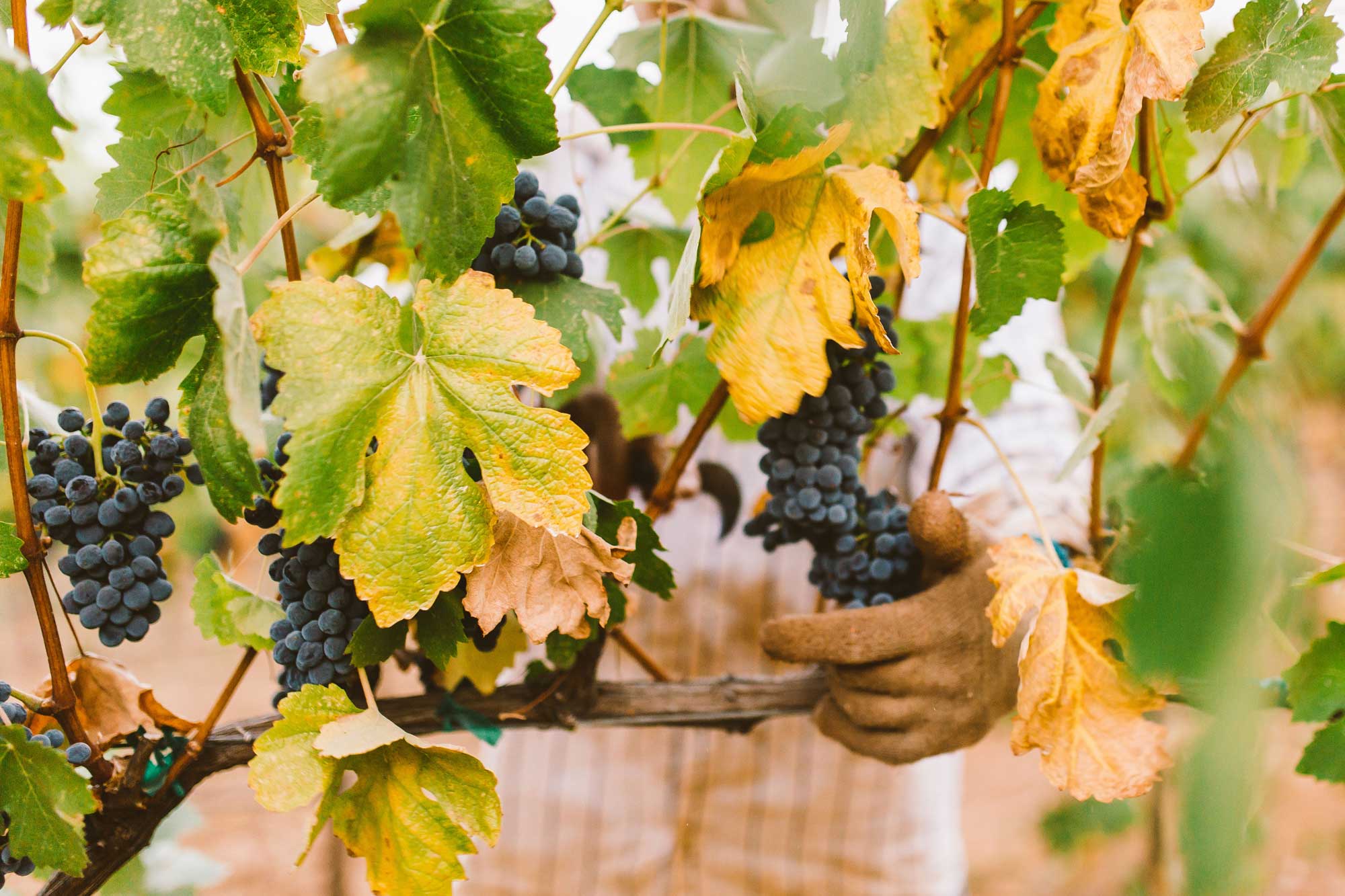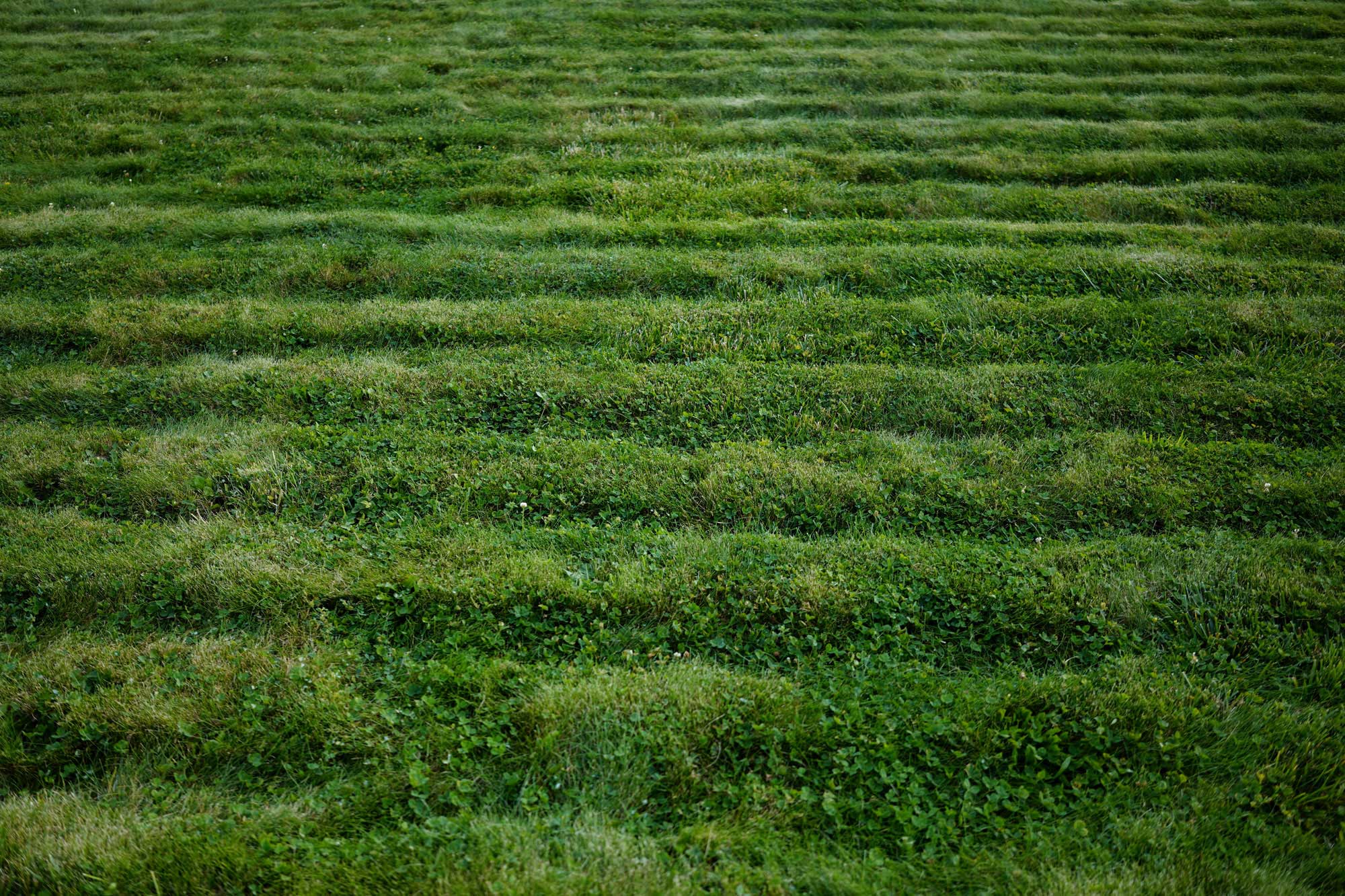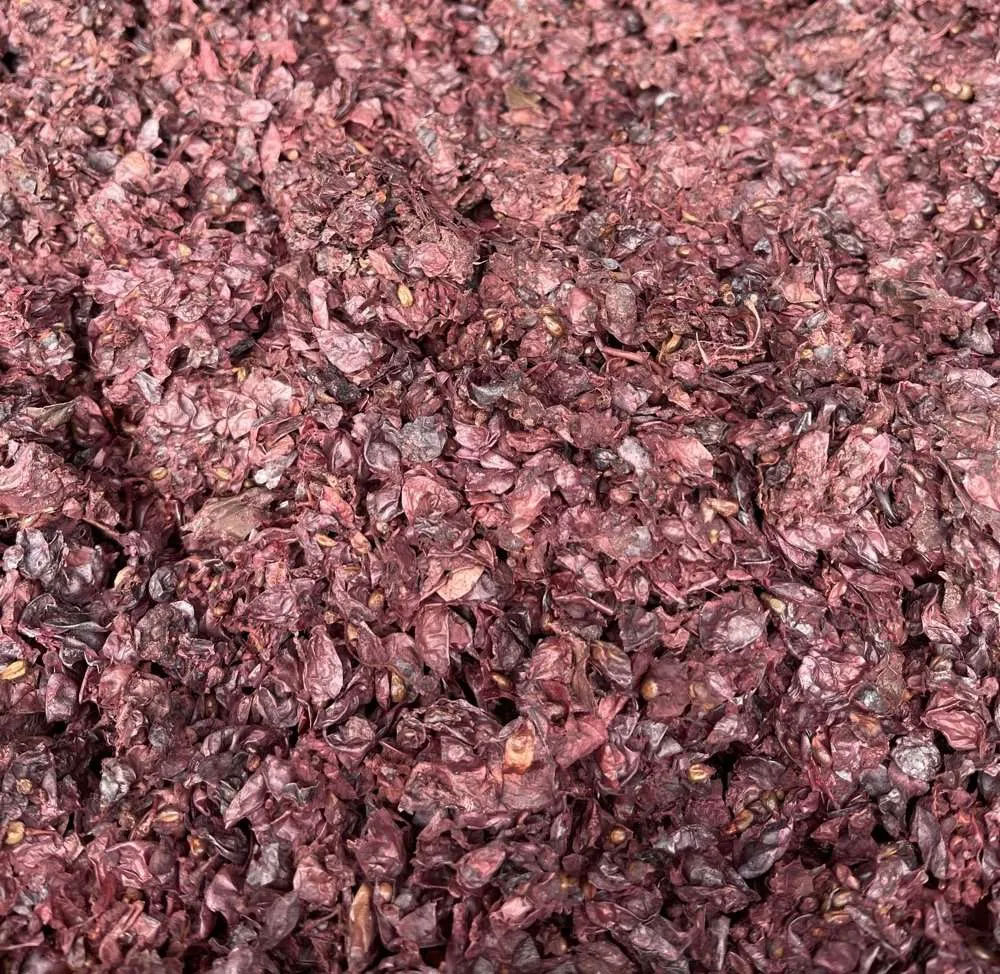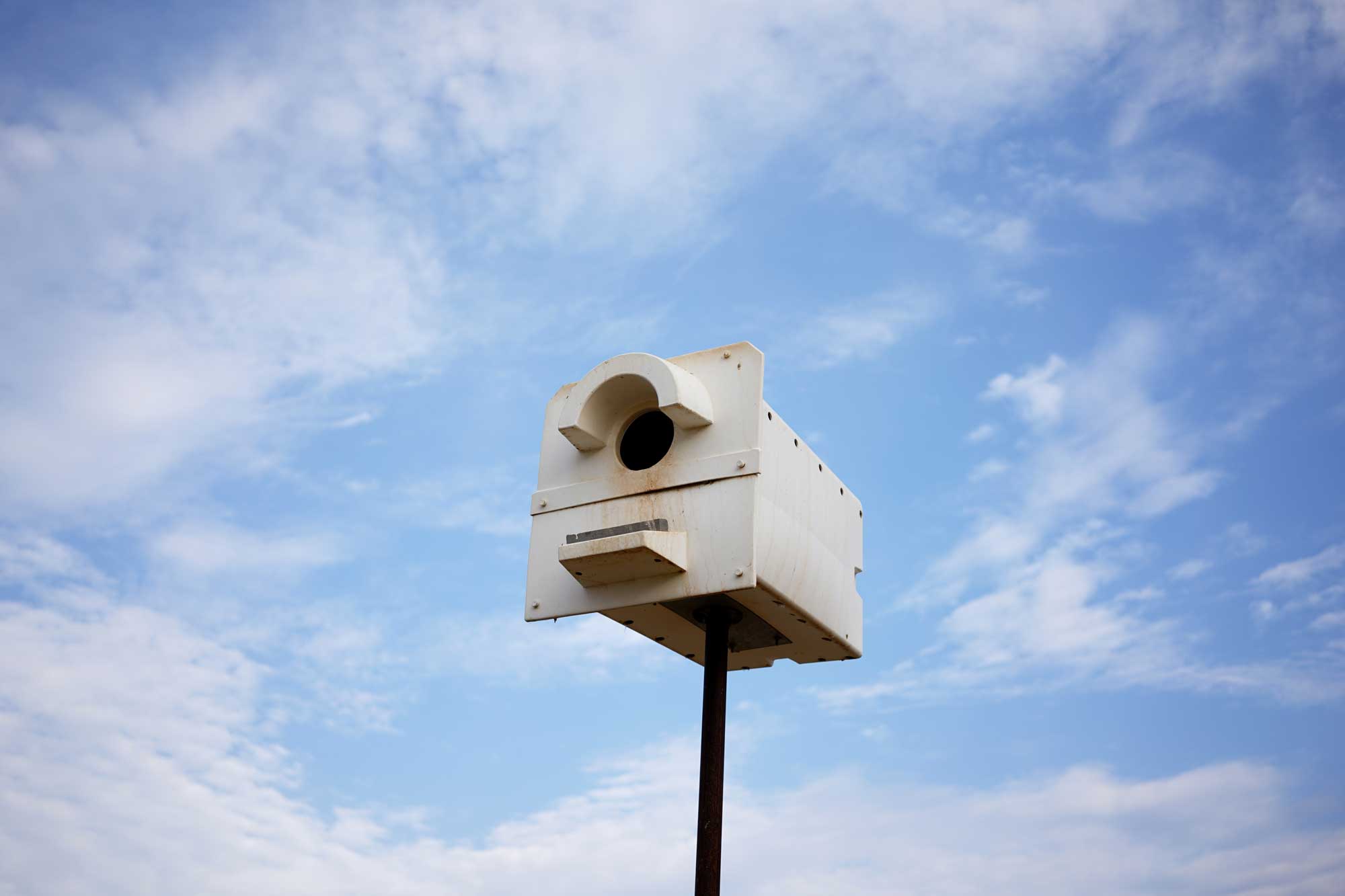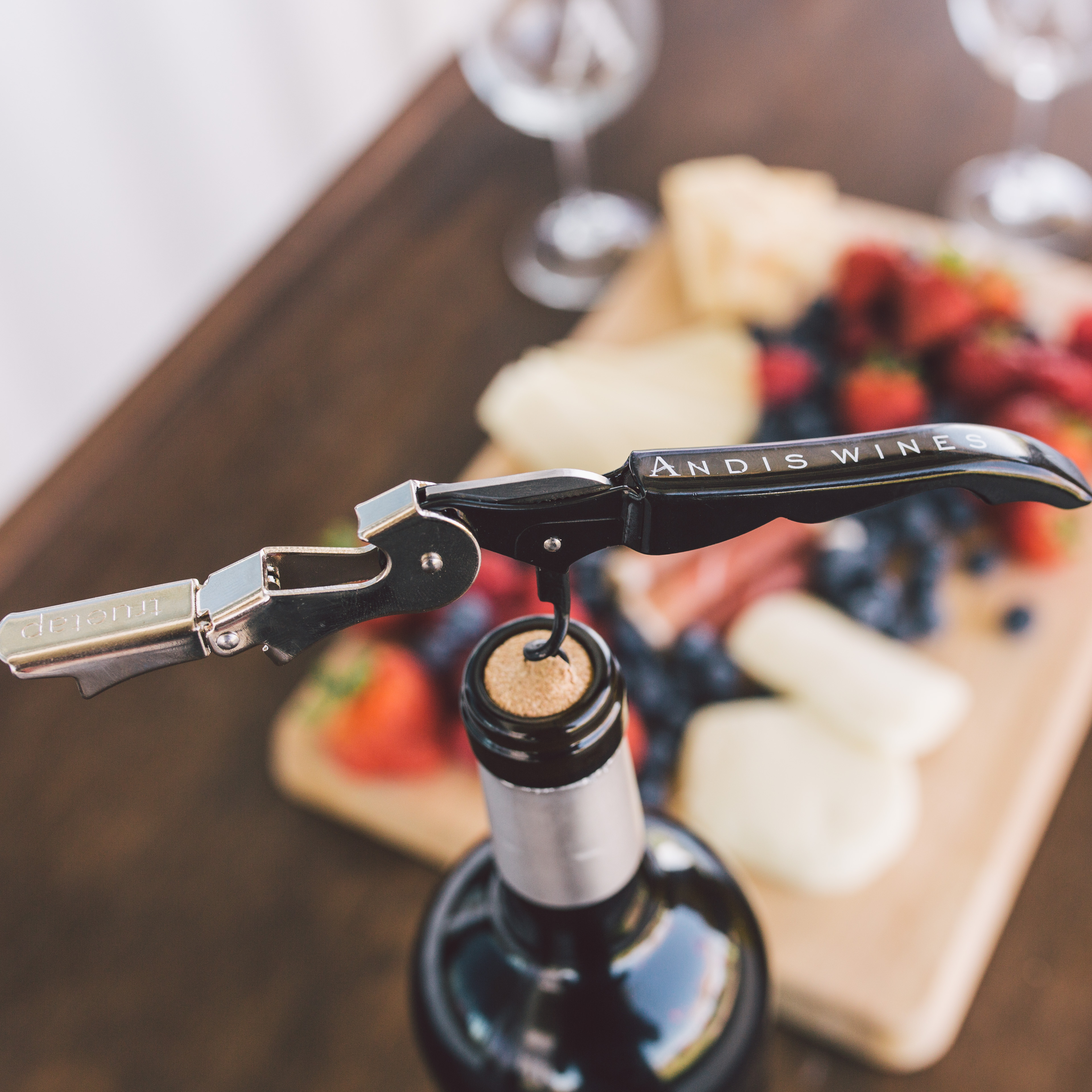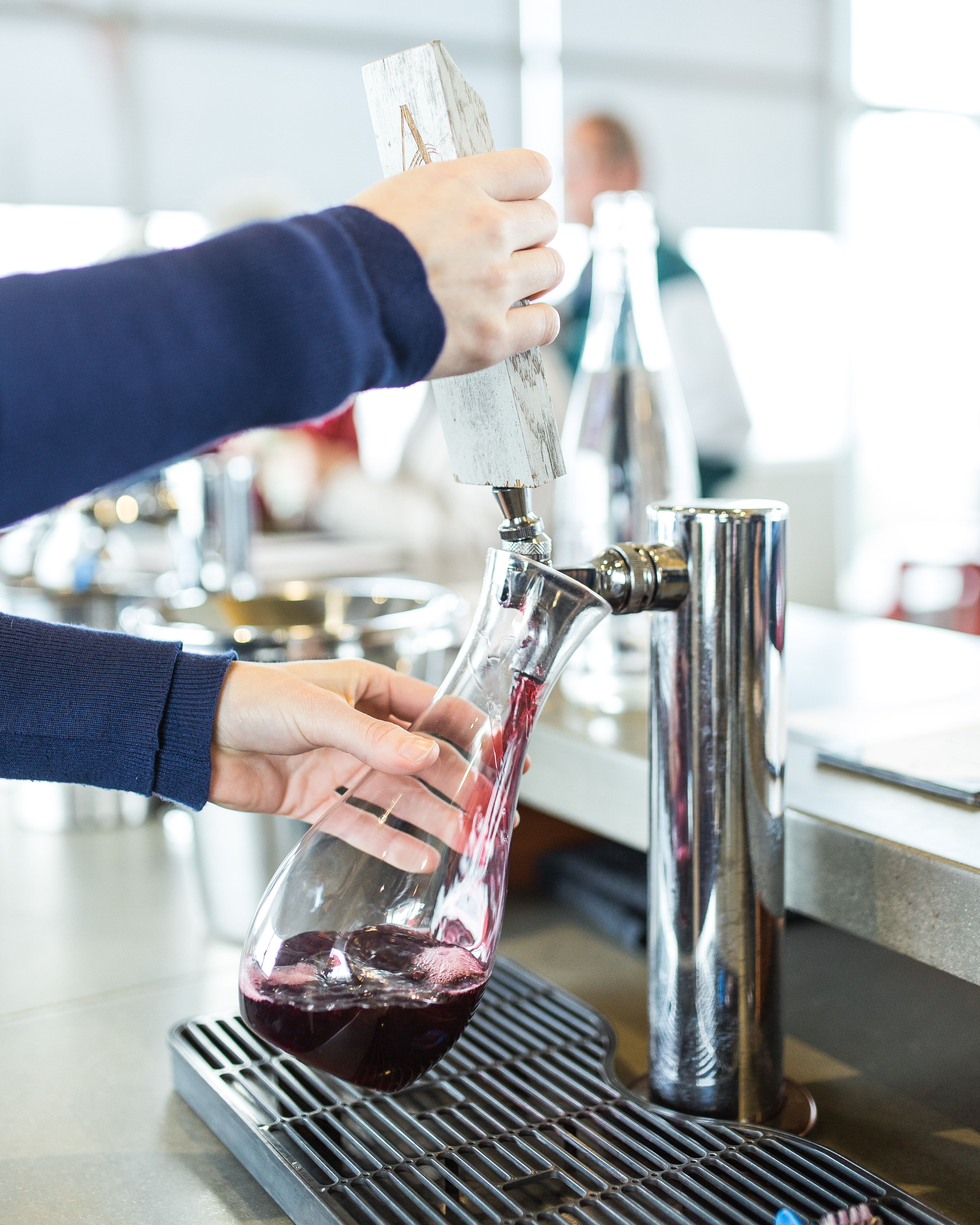Water Management
Our estate grown Zinfandel vines are now 45 years old and completely dry farmed. The combination of maturity and no irrigation, aside from mother nature, forces the vines to struggle a bit and seek water deeper into the soils.
By stretching their root systems through many layers of soil, a variety of minerals and nutrients are brought into the grapes. The grapes produced by these vines are smaller with a higher skin to juice ratio. This allows us to make highly concentrated wines, dense with flavor and texture. Additionally, our vines are self-regulating in that they will not over crop. We get smaller yields but higher quality grapes from these vineyards.
